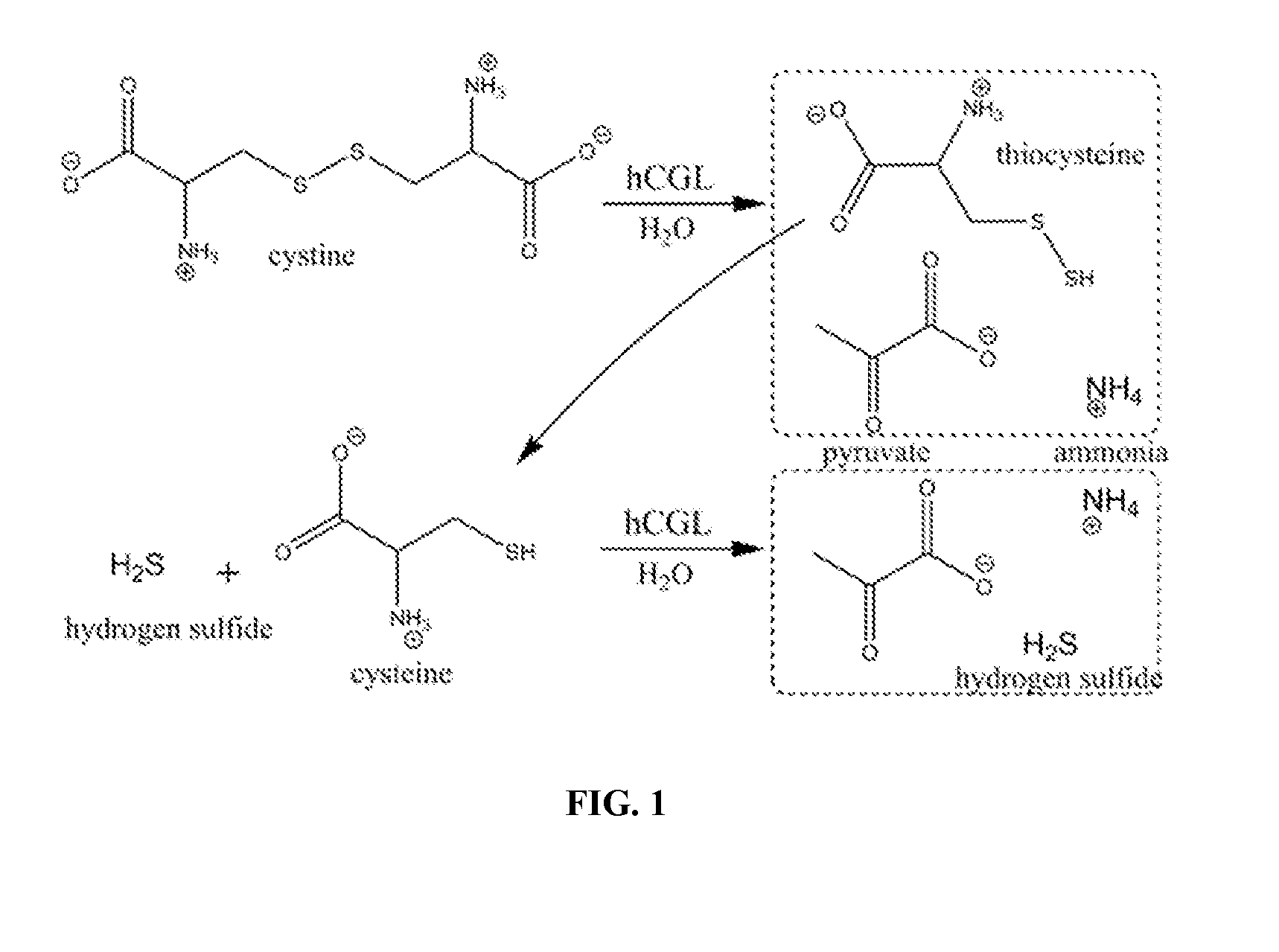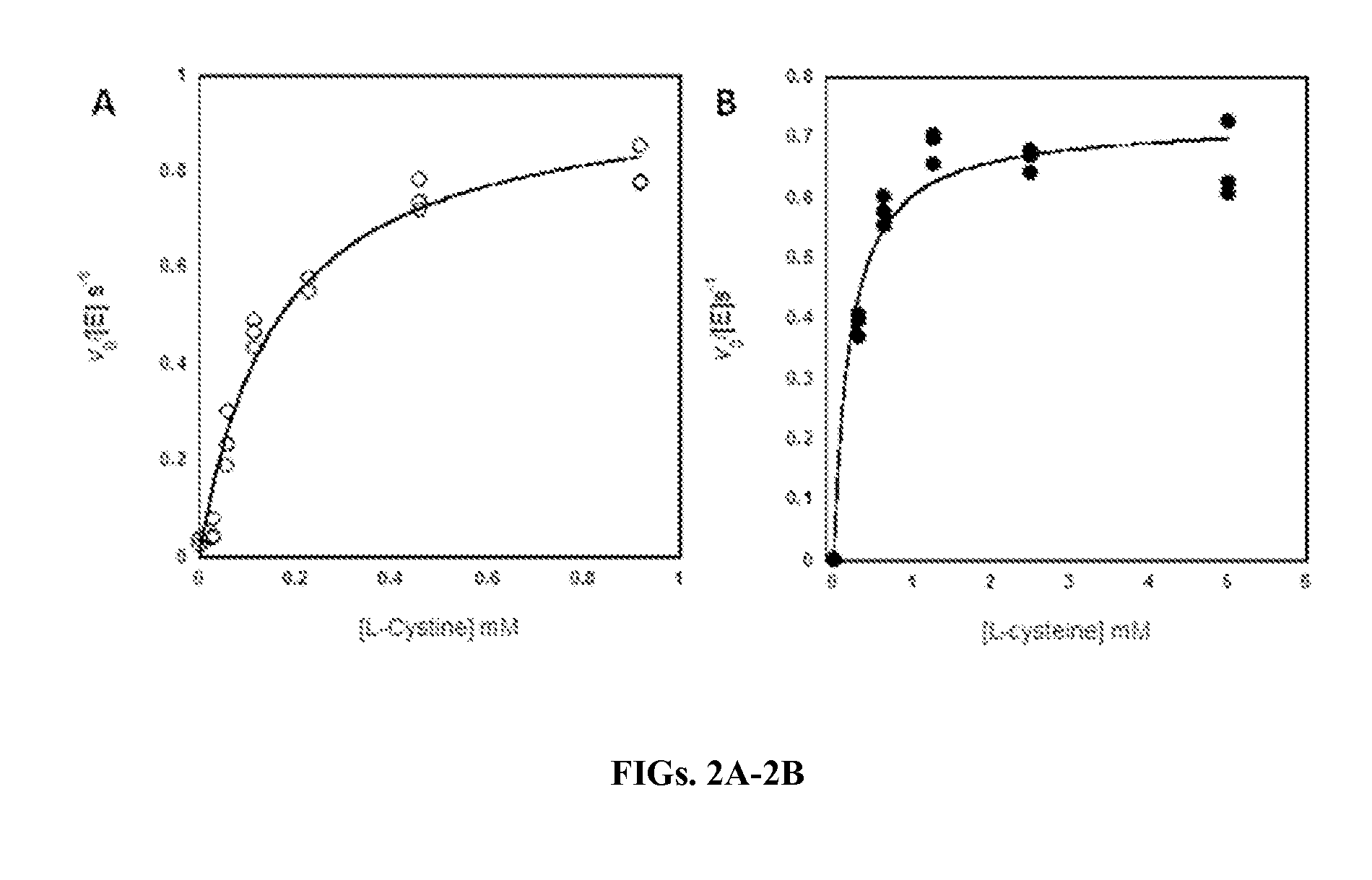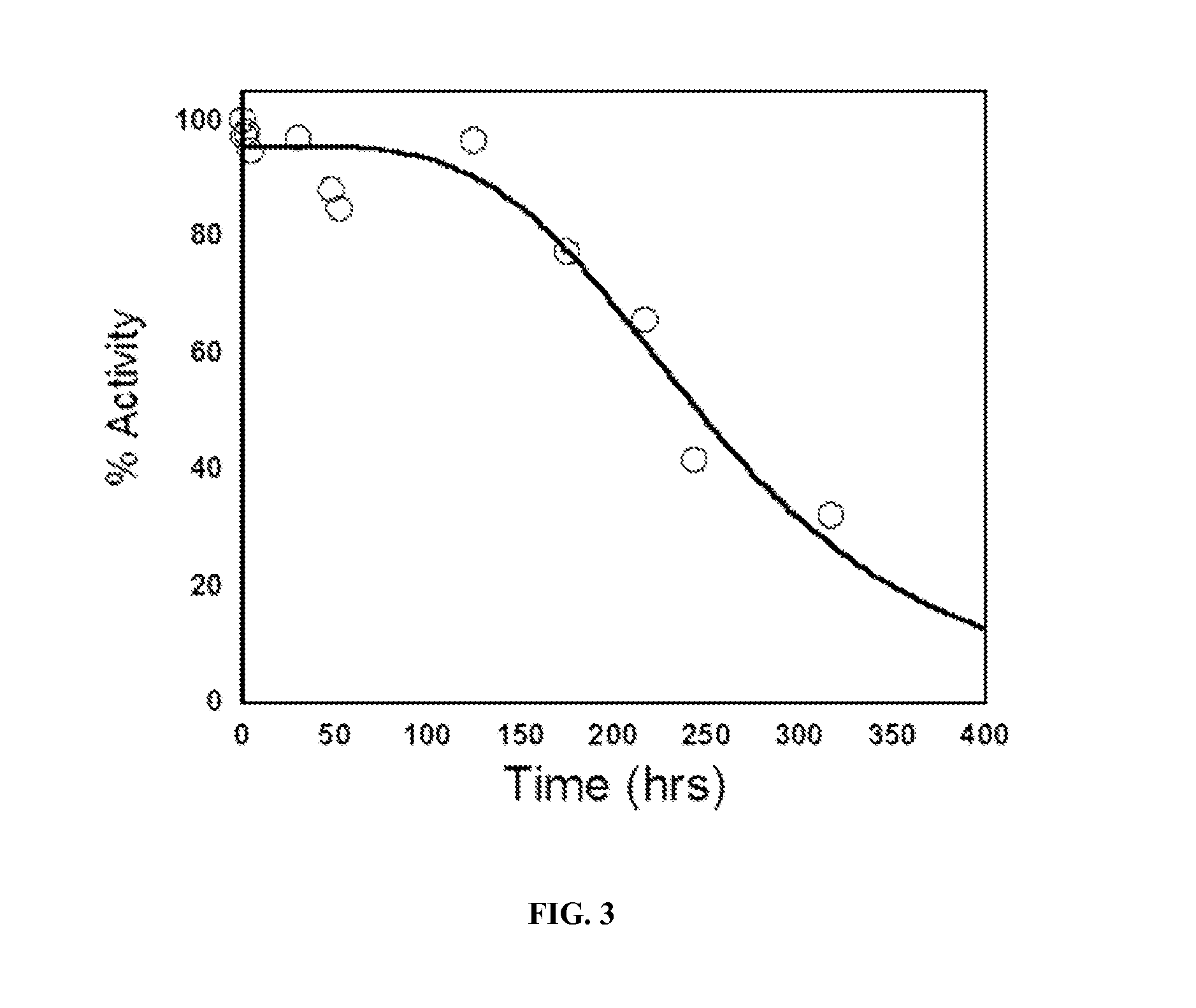Engineered primate cystine/cysteine degrading enzymes as antineogenic agents
a technology of antineoplastic agents and cystine/cysteine degrading enzymes, which is applied in the field of medicine and biology, can solve the problems of inability to find irreversible cystine/cysteine degrading enzymes with suitable properties or activity, and the absence of enzymes, etc., and achieves improved enzymatic properties, low km, and high catalytic activity
- Summary
- Abstract
- Description
- Claims
- Application Information
AI Technical Summary
Benefits of technology
Problems solved by technology
Method used
Image
Examples
example 1
Cystathionine-γ-Lyase as a Scaffold for a Human Cyst(e)Inease Enzyme
[0176]Due to the undesired effects of immunogenicity seen clinically with the use of non-human protein therapeutics, the inventors sought to engineer therapeutically relevant cystine / cysteine degrading activity into a human enzyme (i.e., engineer an enzyme with high kcat and low KM values for cystine / cysteine and also displaying a favorable specificity). Humans have an enzyme called cystathionine-γ-lyase (hCGL) whose function is to catalyze the last step in the mammalian transsulfuration pathway (Rao et al., 1990), namely the conversion of L-cystathionine to L-cysteine, alpha-ketobutyrate, and ammonia. Human CGL can also weakly degrade L-cysteine and its disulfide form, L-cystine, making it an ideal candidate for engineering. Using structurally- and phylogenetically-guided mutagenesis, hCGL variants were engineered to efficiently hydrolyze both L-cysteine and L-cystine.
example 2
Gene Synthesis and Expression of Human Cysthionine-γ-Lyase and Human Cyst(e)Inease
[0177]The hCGL gene contains multiple codons that are rarely utilized in E. coli and can interfere with expression. Thus, in order to optimize protein expression in E. coli, the respective genes were assembled with codon optimized oligonucleotides designed using the DNA-Works software (Hoover et al., 2002). Each construct contains an N-terminal NcoI restriction site, an in-frame N-terminal His6 tag and a C-terminal EcoRI site for simplifying cloning. After cloning into a pET28a vector (Novagen), E. coli (BL21) containing an appropriate hCGL expression vector were grown at 37° C. using Terrific Broth (TB) media containing 50 μg / ml kanamycin in shaking flasks at 250 rpm until reaching an OD600 of ˜0.5-0.6. At this point the cultures were switched to a shaker at 25° C. and induced with 0.5 mM IPTG and allowed to express protein for an additional 12 h. Cell pellets were then collected by centrifugation and...
example 3
96-Well Plate Screen for Cyst(e)Inease Activity and Ranking Clones
[0178]Human CGL slowly degrades L-cysteine to pyruvate, ammonia and H2S, and converts L-cystine to pyruvate, ammonia and thiocysteine (kcat / KM˜0.2 s−1mM−1 and 0.5 s−1mM−1, respectively) (FIG. 1). Thiocysteine is further nonenzymatically degraded to L-cysteine and H2S. A colorimetric assay for the detection of pyruvate using 3-methyl-2-benzothiazolinone hydrazone (MBTH) (Takakura et al., 2004) was scaled to a 96-well plate format for screening small libraries and for ranking clones with the greatest cystine and / or cysteine lyase activity. This plate screen provides a facile method for picking the most active clones from the mutagenic libraries. Clones displaying greater activity than parental controls were selected for further characterization.
[0179]Single colonies containing mutagenized hCGL, or hCGL controls, were picked into 96-well culture plates containing 75 μL of TB media / well containing 50 μg / ml kanamycin. Thes...
PUM
| Property | Measurement | Unit |
|---|---|---|
| Level | aaaaa | aaaaa |
| Enzyme activity | aaaaa | aaaaa |
Abstract
Description
Claims
Application Information
 Login to View More
Login to View More - R&D
- Intellectual Property
- Life Sciences
- Materials
- Tech Scout
- Unparalleled Data Quality
- Higher Quality Content
- 60% Fewer Hallucinations
Browse by: Latest US Patents, China's latest patents, Technical Efficacy Thesaurus, Application Domain, Technology Topic, Popular Technical Reports.
© 2025 PatSnap. All rights reserved.Legal|Privacy policy|Modern Slavery Act Transparency Statement|Sitemap|About US| Contact US: help@patsnap.com



